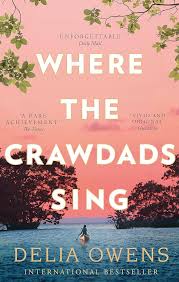42. A Cell
byA Cell becomes the physical representation of Kya’s confinement in Chapter 42, set in 1970, where she finds herself locked away in a county jail after her freedom has been violently stripped from her. The harsh realities of life behind bars quickly become apparent as Kya settles into her twelve-by-twelve space, a stark and unyielding environment marked by concrete walls and a barred window. Wearing the uncomfortable gray jumpsuit labeled “COUNTY INMATE,” Kya’s once expansive world is reduced to this small, suffocating space. Inside, she finds only the basics: a wooden bed, a crate-turned-table, a sink, and a toilet veiled by a flimsy curtain. This humiliating arrangement is underscored by the fact that Kya is the first long-term female inhabitant of the cell, making her presence all the more isolating.
Her new reality is a far cry from the wide open spaces of the marshlands she once roamed freely, and the absence of the natural world she loved weighs heavily on her. In a small act of defiance and an attempt to connect with the outside world, Kya arranges the wooden crate beneath the solitary window to serve as a makeshift platform. From this vantage point, she can see a mere sliver of the sea and marsh, a heartbreaking reminder of the freedom she has lost. Through the window, she watches the dance of light, the playful dust motes, and the occasional sighting of pelicans or an eagle hunting in the distance, all of which remind her of the life she yearns to return to. Each fleeting glance at the outside world fuels the longing for the expansive, untamed life she once knew, a life now painfully beyond her grasp.
While the physical space of her cell confines her body, it is the psychological prison that becomes more suffocating as time passes. The cell, which Kya internally redefines as a “cage,” becomes a symbol of the invisible chains that bind her spirit. Her mind, once free to wander the marsh, now spirals with thoughts of hopelessness and despair, yet she engages in small acts of defiance to maintain a sense of autonomy. Kya inspects her hair, traces the self-inflicted marks on her skin, and refuses to let the walls fully contain her sense of self. Despite the prison’s efforts to isolate her, her connection to the outside world—symbolized by the small sliver of nature she can see from her window—remains intact, providing a quiet form of resistance to the oppressive circumstances she finds herself in. The presence of the framed picture of Jesus, placed by the Ladies’ Baptist Auxiliary as a forced companion, does little to comfort her, its quiet symbolism in stark contrast to the chaos of her emotional world.
In a poignant moment of reflection, Kya connects her own imprisonment to that of a broken seagull in an Amanda Hamilton poem, which she identifies with deeply. The seagull, once a creature of flight, now grounded and silent, mirrors Kya’s own plight. Both the bird and Kya were once free, soaring through the world, only to be trapped by forces beyond their control. This shared sense of loss and yearning for freedom drives the emotional core of the chapter, as Kya’s spirit continues to reach beyond the confines of her situation. Her connection to the natural world, though physically out of reach, remains her lifeline—her defiance in the face of her isolation, and the quiet belief that freedom, even in its most abstract form, is still hers to claim.
This chapter weaves the harshness of Kya’s imprisonment with her unyielding hope and longing for the freedom she once knew. The cell becomes a metaphor not just for physical confinement, but for the emotional and psychological chains that bind us all. Kya’s experience invites readers to reflect on the various ways in which we are all imprisoned by our circumstances—whether by the walls we encounter or the limitations we impose on ourselves—and yet the human spirit’s drive for freedom endures. Through Kya’s resilience and connection to the natural world, the narrative explores the themes of isolation, introspection, and the indomitable will to break free from the confinements of our own lives, no matter how daunting they may seem. The story paints a picture of a woman who, though physically trapped, remains emotionally and mentally determined to rise above her circumstances.


